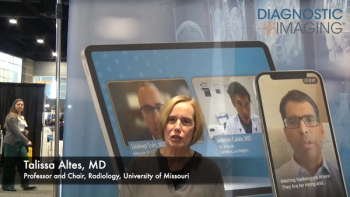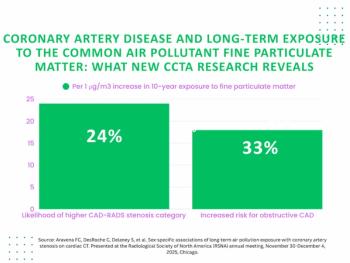
Can Deep Learning Assessment of X-Rays Improve Triage of Patients with Acute Chest Pain?
In a study involving patients who presented to emergency departments with acute chest pain, a deep learning model demonstrated significantly improved prediction of aortic dissection and all-cause mortality and indicated that additional pulmonary and cardiovascular testing could be deferred in seven times as many patients as suggested by conventional risk factors and testing measures.
An emerging deep learning model may facilitate more efficient diagnosis of life-threatening conditions and appropriate triage of patients with acute chest pain (ACP) in the ER.
In a
The deep learning model demonstrated an 83 percent area under the curve (AUC) after fine-tuning in the external test set for aortic dissection and all-cause mortality in comparison to model 2’s 66 percent AUC for aortic dissection and 68 percent AUC for all-cause mortality, according to the study. The researchers noted the deep learning model had a more modest AUC for PE (69 percent), which was eight percent higher than the AUC for model 2 (61 percent). For ACS, the study authors noted comparable AUCs for the deep learning model (86 percent) and model 2 (87 percent).
In contrast to commonly used chest pain scores that provide an estimate for ACS, the study authors pointed out that the deep learning model offers a more comprehensive risk assessment with its ability to consider risks for ACS, aortic dissection, and PE.
“Compared with other chest radiography-based DL models, which identify specific abnormalities, our model provides individualized risk assessment for ACP syndrome, which may help deferral of additional cardiovascular or pulmonary tests in up to four to eight times as many individuals, potentially aiding rapid triage of patients in the (emergency department),” wrote Michael T. Lu, M.D., M.P.H., the director of AI and co-director of the Cardiovascular Imaging Research Center at Massachusettes General Hospital (MGH), and colleagues.
(Editor’s note: For related articles, see “
Employing a sensitivity threshold of 99 percent, the researchers found that the deep learning model indicated deferral of additional pulmonary and cardiovascular testing in 14 percent of patients in contrast to model 2, which indicated deferral of the additional testing in two percent of patients.
In an
In regard to study limitations, the authors noted a potential selection bias with the retrospective data being drawn from electronic health records (EHRs) at university teaching hospitals. The researchers acknowledged the EHR database lacked detail on leading symptoms, initial triage information and patient-level care data. While the patient inclusion criteria emphasized those in whom additional pulmonary or cardiovascular tests could be deferred, the study authors conceded that the patients in the EHR database may have included those without acute chest pain.
Newsletter
Stay at the forefront of radiology with the Diagnostic Imaging newsletter, delivering the latest news, clinical insights, and imaging advancements for today’s radiologists.




























